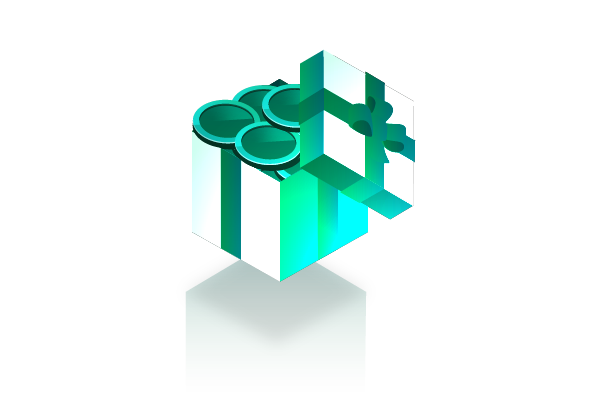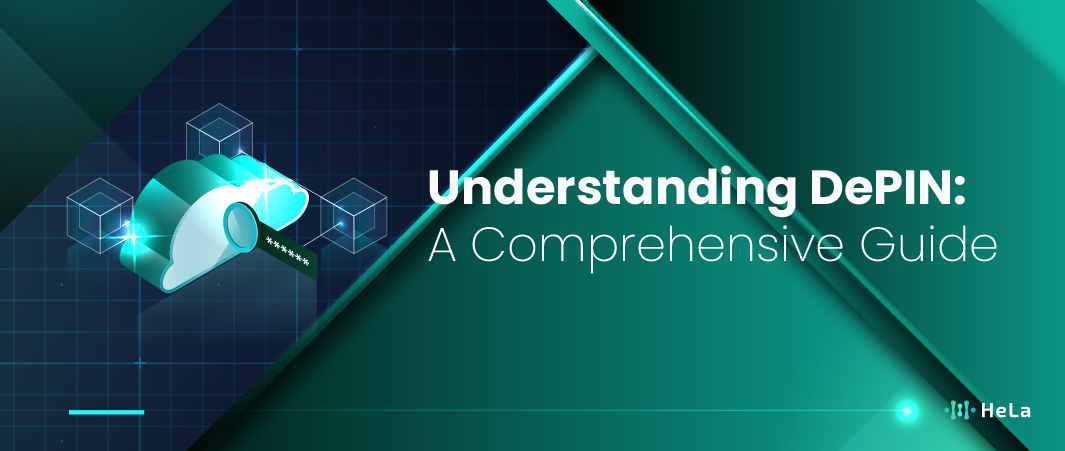What Is DePIN? How Does It Work?, DePIN eliminates the need for centralized control by using smart contracts and real-time data analysis, offering a transparent and optimized approach to infrastructure management. This article will dive into the workings of DePIN and its potential to reshape how we interact with and maintain critical infrastructure.
However, as with any emerging technology, DePIN faces its own set of challenges. Issues like scalability, security, and the need for clear regulatory frameworks are critical factors that will determine its success. We’ll explore the benefits, risks, and future trends of DePIN, providing you with a comprehensive understanding of this innovative technology and why it’s worth keeping an eye on.
What is DePIN?

DePIN, or Decentralized Physical Infrastructure Networks is a new concept in the blockchain technology world that connects physical infrastructure with decentralized technology. Simply put, DePIN integrates various physical facilities, such as data centers, energy storage, and other hardware, into a decentralized blockchain network. This way, physical infrastructure, which is usually managed centrally, can be managed in a more transparent, efficient, and secure manner.
The DePIN concept enables optimal utilization of physical infrastructure through blockchain technology. For example, in a DePIN network, infrastructure providers such as energy storage or server space providers can operate independently but are connected within a single distributed ecosystem. This allows them to interact directly with users without the need for intermediaries, which often add costs and reduce efficiency.
One of the main benefits of DePIN is its ability to enhance transparency and security. By using blockchain technology, all transactions and interactions within the DePIN network are recorded in an immutable ledger. This reduces the risk of fraud and ensures that all data and transactions can be easily verified. Additionally, this system allows for more efficient management of physical resources, which can lead to reduced operational costs and improved services.
In the future, DePIN could transform how we interact with physical infrastructure. With increasing adoption of this technology, we might see more innovations in resource management, integration of renewable energy, and enhancement of public services. DePIN has the potential to bring significant changes in how we utilize and manage physical facilities, making them more affordable, transparent, and efficient.
How Does DePIN Works?

The operation of DePIN, or Decentralized Physical Infrastructure Networks, involves several key components that leverage blockchain technology to manage and integrate physical infrastructure in a decentralized manner. Here’s a deeper look at how DePIN works:
Integration of Physical Infrastructure into the Blockchain Network
DePIN is used to interconnect different forms of physical infrastructure, like data centers, energy storage, and other hardware into the blockchain infrastructure.
All these infrastructures are recorded as nodes in the blockchain network, which enables them to execute their functions individually while at the same time being a part of a broader network. The system has no central hub and each node has its own digital persona that can directly communicate with other nodes.
Smart Contracts and Automation
Smart contracts are used in the DePIN network to handle different operations and business deals. Smart contracts are applications that are built onto the blockchain and that automate the performance of a set of contractual terms and conditions.
For instance, when sharing data or consuming a service, payment, verification, or resource distribution can be handled by the smart contract without the need for a human operator.
Transparency and Security
It is also important to note that, due to the blockchain integration, DePIN has high levels of transparency and security. Every exchange is documented in a transparent, tamper-proof ledger, or blockchain, where data that has been entered cannot be changed or erased.
Also Read: Top 5 DePIN Projects in Web3 to Check (Update 2024)
This guarantees full control over all the operations within the network and prevent cases of fraud or any alteration within the data. Cryptographic technology also helps in data and transaction security by preventing access by unauthorized individuals.
Distributed Resource Management
The use of DePIN makes it easier for students and other stakeholders to manage physical resources in a more decentralised manner.
As an example, energy providers are able to stock and supply energy to consumers in the network they belong to without having to go through massive middlemen or central powerhouse firms. This helps to cut on the expenditures and also the time taken to conduct transactions while the utilization of resources can be made versatile depending on user’s demands.
The Risks and Challenges in DePIN

DePIN, or Decentralized Physical Infrastructure Networks, offers many benefits but also faces several risks and challenges. Here are some risks and challenges in DePIN:
Scalability and Network Complexity
Despite its strong points, DePIN possesses a number of significant weaknesses, primarily inherent to its scalability and the complexity of the networking structure. Distributing a large number of individual blockchain networks with large arrays of different types of physical infrastructure facilitates can cause problems connected with the capacities and the speed of data processing.
An addition to the number of nodes and transactions within the network increases the management of the system, which in turn depending on the complexity of the system may also lead to a decrease in the efficiency of the system.
Security and Vulnerabilities
Indeed, while using a blockchain furnishes clients with a high level of security, there are still a considerable number of security threats that pose a threat to DePIN.
There are risks such as 51 brute force attacks where a group of people with undesirable motives gains control over more than 50% of the hashing power of the network. Additionally, hacker can take advantage of gaps in smart contracts or can manipulate code and this can lead to losses or even interruption of services.
Regulation and Compliance
Because DePIN synchronizes a physical infrastructure with blockchain, DePIN must follow numerous legal and formalacy standards that may differ according to the specific country.
White and Fitzgerald also identified another legal risk in the form of compliance with the existing laws on data, privacy, and financial technologies since these are evolving fields and jurisdiction sometimes regulates the use of technological innovations. Challenges can be distinguished regarding operational and legal requirements affected by such complex regulations of DePIN providers.
Adoption and Integration
Another major issue might arise from transitioning from old physical structures to adopting and integrating DePIN into current structures. This resistance may be attributed to initial costs that may be alarming to many physical infrastructure providers or the training costs, and disruptions that change may bring.
Furthermore, there is a necessity for the practical implementation of uniform sets of standards and working protocols which will permit to reach compatibility of various sorts of infrastructures with the DePIN system.
Technical and Infrastructure Issues
When adopting and deploying the nature of blockchain on physical structures, there are certain technical and maintenance considerations to make.
Hardware and software must be adaptable to fit into the decentralized structure and often, there are conflicts in the use of hardware and software that needs technical solution. This can elevate the overall costs and time of implementation.
Benefits of DePIN
DePIN, or Decentralized Physical Infrastructure Networks, offers several significant benefits that can transform how we manage and utilize physical infrastructure. Here are some of the main benefits of DePIN:
Transparency and Accountability
Another benefit of DePIN is the clarity of the outcome and the responsibility that the citizen will bear. It is also important to note that all performances and dealings in the DePIN system are stored in a blockchain ledger.
This way, all stakeholders involved can have access and monitor all the processes that happened, and this minimizes the chances of fraud, mistakes, or changed data. This also assists in creating trust when the users of the service are having a deal with the suppliers.
Efficiency and Cost Savings
In light of this, DePIN can save on its use of intermediaries and manage its resources more efficiently with the help of blockchain technology.
For instance, infrastructure providers are capable of sales direct to consumers and the elimination of middlemen add charges and processes. It also suggests that through the smart contract features, various processes are instantiated, and human effort and therefore costs are minimized.
Data and Transaction Security
Blockchain offers a stringent method of protecting data based on cryptography as well as consensus mechanisms.
In DePIN network, data and transactions are quickly safeguarded from being altered or used by people who are not allowed to do so. This is especially true in regards to physical facilities that house sensitive equipment like data centers and energy storage facilities, wherein data protection and integrity are paramount.
Flexibility and Scalability
The fact that DePIN makes it possible to manage the physical infrastructure more flexibly and at a larger scale. Due to the structure of the system, changes in needs or the operational scale can be implemented fairly quickly.
For instance, the DePIN network can add more nodes or even incorporate new types of structures into the network without necessarily having to completely overhaul the existing structures.
Innovation and Service Improvement
The DePIN technology reveals prospect of generating innovations in managing physical infrastructures. In this way, DePIN can positively influence the creation of new solutions and improvements to services due to the flexibility and integration that the platform offers.
This includes incorporation of new technologies for instance, renewable energy or the smart storage systems that enhance the general performance of the infrastructure systems.
The Future of DePIN
DePIN or Decentralised Physical Infrastructure Network has a promising future which has the potential to revolutionalise the management and interactivity of physical infrastructure. DePIN remains compatible with advanced technologies, making introductions of newer innovations such as the Internet of Things (IoT) and artificial intelligence (AI) seamless. It will facilitate greater interconnection and advanced information-gathering in infrastructural management for informed, immediate actions. For instance, one can consider IoT sensors which can be used to supervise the state of physical assets on a constant basis whereas via AI algorithms the condition of such assets can be improved in addition to anticipating the necessity of maintenance on a consistent basis with help of a secured block chain.
There are also a number of opportunities in store for DePIN in the sense of scalability and performance. With advances in Blockchain technology, future solutions like sharding and better consensus algorithms will deal with issues that exist because of scaling challenges, specifically in terms of transaction and data processing. This will enable to expand and develop DePIN networks in order to meet potential growth without downgrading on speed or strength. Bandwidth upgrades in physical assets management will provide DePIN with a wider coverage of administrative functionality that ranges from micro-electronics devices to infrastructure systems, hence making DePIN a versatile device that can be administered for various usages.
Also Read: 15 Best Web3 Social Networks to Consider (Update 2024)
Based on legislative and compliance requirements, specific spheres will be pivotal for DePIN’s development further. They added that as adoption increases, there will be need to have well defined rules that relate to the protection of privacy of clients as well as security of data as well as operation parameters. Over time, government and other regulatory agencies are very likely to require additional baseline requirements to ensure that the DePIN systems function with the highest levels of transparency and security. It will also lead to a better approval of the DePIN technology in various sectors as it will be clearer on regulations, which in return increase its efficiency and reliability.
Lastly, DePIN has potential in bringing people worldwide together to contribute to sustainable development. Thus, DePIN has the opportunity to integrate infrastructure networks in different countries, making the process of turning the planet into a single infrastructure organism more efficient. This could lead to better organization and coordination of seed resource, and efficient and optimal strategies of using the seed resources with minimal wastage. For example, it could contribute to the improvement of energy distribution and support the achievement of sustainable development objectives, such as the introduction of renewable energy sources.
Moreover, as mentioned earlier, DePIN technology is still in its growth stage. Therefore, its presence locally and particularly in the international market will result in a more influential role that provides adequate solutions to some of the existing construction issues in the world.
Conclusion
What Is DePIN? How Does It Work? Throughout this exploration, we’ve seen that DePIN, or Decentralized Physical Infrastructure Networks, is a powerful new approach to managing physical infrastructure using blockchain technology. By decentralizing control and leveraging smart contracts, DePIN offers a transparent, secure, and efficient way to manage assets such as energy grids, data centers, and transportation systems.
It eliminates the need for traditional intermediaries and optimizes resource use through real-time data analysis. This innovative approach has the potential to revolutionize how infrastructure is managed, making it more resilient and adaptable to changing demands.
However, the journey to fully realizing DePIN’s potential is still unfolding. Challenges such as scalability, security, and the need for robust regulatory frameworks remain significant hurdles. Yet, with ongoing advancements in technology and increasing global collaboration, these challenges are being actively addressed, paving the way for DePIN’s broader adoption. As we move forward, DePIN stands poised to play a crucial role in the future of infrastructure management, offering solutions that are not only more efficient but also more sustainable and equitable. This makes DePIN a key area to watch as it continues to evolve and shape the infrastructure of tomorrow.
Disclaimer: The information provided by HeLa Labs in this article is intended for general informational purposes and does not reflect the company’s opinion. It is not intended as investment advice or a recommendation. Readers are strongly advised to conduct their own thorough research and consult with a qualified financial advisor before making any financial decisions.

